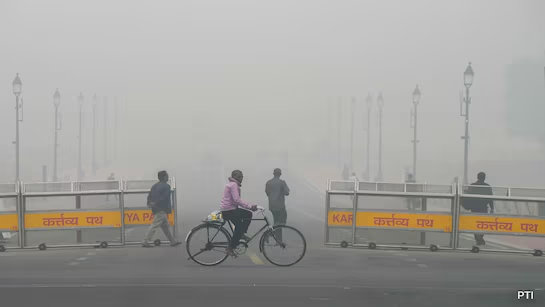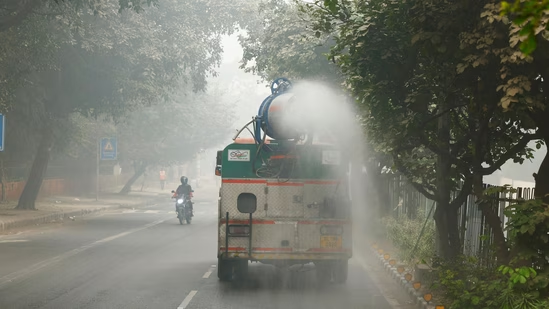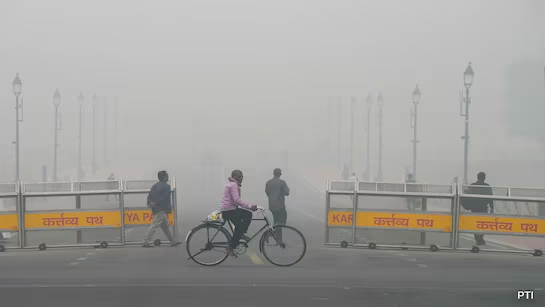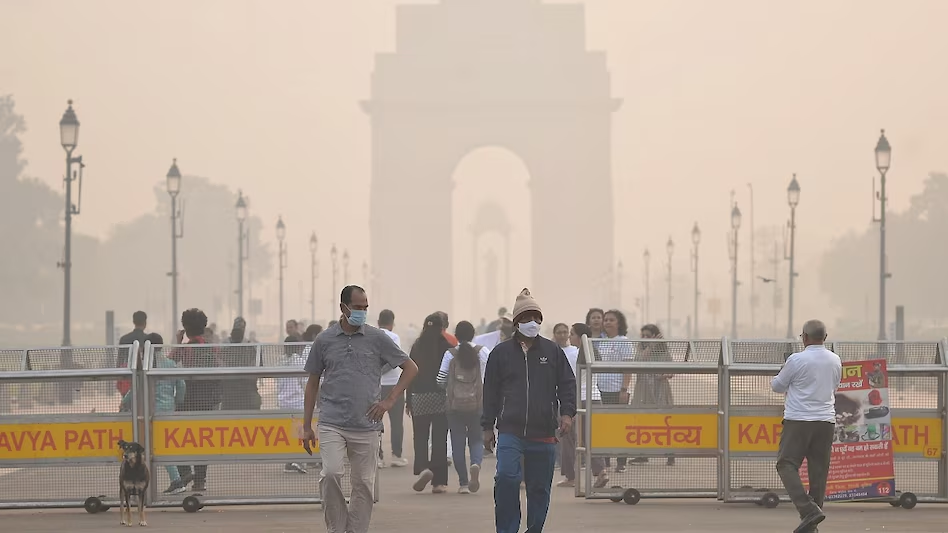Every winter, headlines scream about smog blanketing India’s capital — and with good reason. The Delhi AQI (Air Quality Index) often crosses 400 or even 500, placing it in the “Severe” category. But what does that really mean for the 30 million people breathing Delhi’s air every single day?

Delhi’s pollution crisis isn’t just about discomfort — it’s about survival. When the Delhi AQI spikes, hospitals overflow with patients suffering from cough, eye irritation, and breathlessness. Long-term exposure can silently damage your lungs, heart, and even brain.
In this detailed guide, we’ll uncover five shocking facts about Delhi AQI, explain the science behind them, and share what steps you can take to protect yourself and your family.
What Does Delhi AQI Mean?
The Air Quality Index (AQI) is a standardized measure of how polluted the air is. It combines the concentration of several harmful pollutants — such as PM2.5, PM10, NO₂, SO₂, O₃, and CO — into a single number that indicates the overall air quality.
Here’s a quick breakdown:
| AQI Range | Air Quality | Health Impact |
|---|---|---|
| 0–50 | Good | Minimal impact |
| 51–100 | Satisfactory | Minor discomfort to sensitive groups |
| 101–200 | Moderate | Breathing discomfort for vulnerable people |
| 201–300 | Poor | Respiratory issues for most individuals |
| 301–400 | Very Poor | Serious health effects after prolonged exposure |
| 401–500 | Severe | Emergency conditions; everyone affected |
When Delhi AQI goes beyond 300, the air becomes toxic — even healthy adults may struggle to breathe, while children and the elderly face severe risks.
Fact 1: Delhi Has Some of the World’s Worst Air Quality
It’s no exaggeration — the Delhi AQI regularly ranks among the top five most polluted cities globally. According to the World Air Quality Report 2024, Delhi’s average AQI hovered above 350 during November, categorizing it as “Very Poor” nearly every day.
Why it happens:
- Stubble burning: Farmers in Punjab and Haryana burn crop residue after harvest, releasing enormous amounts of smoke that drift toward Delhi.
- Vehicle emissions: Over 10 million vehicles operate in Delhi, producing nitrogen oxides and particulate matter.
- Construction and road dust: Constant building activity keeps fine particles suspended in the air.
- Weather: During winter, cold air traps pollutants close to the ground, creating a “pollution dome.”
“Delhi doesn’t just have pollution — it has a public health emergency that repeats every year.”

Fact 2: Breathing Delhi’s Air Equals Smoking 10–20 Cigarettes a Day
Perhaps the most shocking fact about Delhi AQI is this: studies have equated the city’s daily air exposure to smoking 10 to 20 cigarettes per day.
When AQI crosses 400, the PM2.5 levels are so high that each breath you take delivers toxic particles deep into your lungs and bloodstream.
Health implications include:
- Lung inflammation and chronic bronchitis
- Asthma flare-ups
- Heart disease and stroke
- Weakened immune system
- Early onset of respiratory problems in children
Case Example:
During the 2024 winter pollution peak, Delhi’s PM2.5 levels reached 450 µg/m³ — nine times higher than the World Health Organization’s safe limit of 50 µg/m³. For context, that’s equivalent to smoking 16 cigarettes per day for an average adult.
Fact 3: Delhi AQI Is Not Just a Winter Problem Anymore
Many assume pollution is a seasonal issue, but data tells a different story.
Over the last five years, Delhi AQI has remained in the “Moderate to Poor” range even in summer and monsoon months. The causes have diversified — from industrial emissions to year-round construction activity.
Average AQI by Season (2024 Data):
| Season | Average Delhi AQI | Classification |
|---|---|---|
| Winter (Nov–Feb) | 380–450 | Severe |
| Summer (Mar–Jun) | 180–250 | Moderate to Poor |
| Monsoon (Jul–Sep) | 150–200 | Moderate |
| Post-Monsoon (Oct) | 300–400 | Very Poor |
This trend shows that Delhi AQI is becoming a 12-month concern, demanding long-term policy action instead of seasonal fixes.
ALSO READ: 9 Morning Routine Steps Women Should Follow for Better Metabolism
Fact 4: Poor Delhi AQI Can Affect Mental Health Too
We usually talk about breathing issues, but the effects of pollution don’t stop at the lungs. High Delhi AQI levels have been linked to anxiety, fatigue, and cognitive decline.
Research from AIIMS (All India Institute of Medical Sciences) and IIT Delhi revealed that prolonged exposure to PM2.5 increases inflammation in the brain, leading to:
- Mood swings
- Poor sleep quality
- Lower concentration levels
- Increased risk of depression
Even school children have shown decreased academic performance during severe smog periods due to lack of outdoor activity and reduced oxygen intake.
“Clean air isn’t just about healthy lungs — it’s about a healthy mind.”
Fact 5: Delhi AQI Can Be Improved — If Everyone Acts Together
The final shocking fact is actually hopeful: despite its reputation, Delhi AQI can improve dramatically when collective action is taken.
Recent Examples of Improvement:
- COVID-19 lockdown (2020): With reduced traffic and closed industries, Delhi AQI dropped to under 60 — the cleanest air in over a decade.
- Odd-Even Scheme: During implementation, air quality temporarily improved by 10–15%.
- Smog towers: Though limited in scope, they have shown localised AQI reduction around Connaught Place and Anand Vihar.
What You Can Do
- Use public transport or carpool whenever possible.
- Avoid burning waste or wood.
- Plant air-purifying plants like Aloe Vera, Spider Plant, and Areca Palm.
- Use N95 masks during high-AQI days.
- Keep a HEPA filter air purifier in your home.
If every citizen took even one of these steps seriously, Delhi AQI could improve faster than expected.

Pro Tips for Reducing Indoor Pollution
Even when outdoor air is bad, you can control your immediate environment.
Here are proven tips to maintain cleaner indoor air:
- Keep windows closed during smog hours (usually early morning and late night).
- Vacuum regularly with HEPA filters to remove indoor dust.
- Avoid incense sticks and candles — they emit fine particles.
- Add greenery indoors — nature’s natural air purifiers.
- Use salt lamps or activated charcoal to absorb toxins.
Government Measures to Control Delhi AQI
Delhi’s authorities have implemented several initiatives over the years, such as:
- Graded Response Action Plan (GRAP) — restrictions based on AQI level.
- Odd-Even vehicle policy — alternating driving days to reduce traffic.
- Ban on firecrackers — during Diwali and New Year.
- Smog towers and anti-smog guns in high-traffic zones.
- Real-time AQI monitoring through SAFAR and CPCB.
However, enforcement remains a challenge, and without strict compliance, these efforts only offer temporary relief.
Comparison: Delhi vs Other Major Cities (2024 Average AQI)
| City | Average AQI | Air Quality Status |
|---|---|---|
| Delhi | 356 | Very Poor |
| Mumbai | 175 | Moderate |
| Bengaluru | 130 | Moderate |
| Kolkata | 210 | Poor |
| Chennai | 95 | Satisfactory |
This table clearly shows that Delhi AQI is nearly double that of other metros — indicating a severe and unique challenge.
Conclusion
The Delhi AQI crisis is one of the biggest environmental and public health challenges of our time.
From invisible toxins damaging our lungs to long-term effects on mental health, air pollution impacts every aspect of life.
But the good news? Change is possible. If the government, industries, and citizens unite with commitment, Delhi’s skies can once again turn blue.
So the next time you check the AQI on your phone, don’t just sigh — act. Every small decision counts.
“Clean air begins with you. The city breathes what you choose to emit.”
FAQs
Author Bio
Written by: Vikrant Rajput
Vikrant is a passionate health and fitness blogger who covers wellness, environmental issues, and sustainable living. He simplifies complex topics like Delhi AQI to help readers make informed, practical lifestyle changes.








Leave a Reply